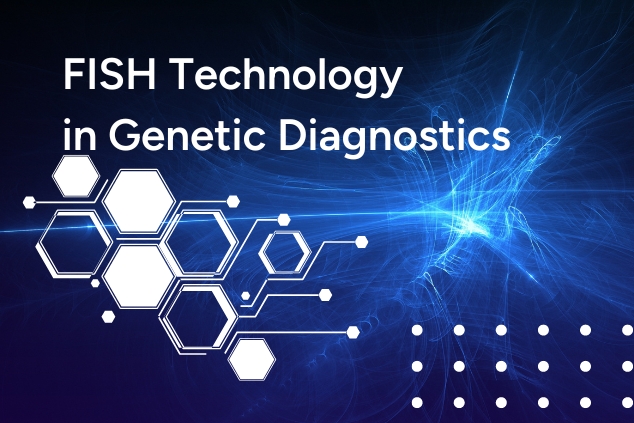In Situ Hybridization (ISH) technology has been a
cornerstone of genetic diagnostics since its inception. Its ability to detect
and map the presence or absence of specific DNA sequences on chromosomes has
made it indispensable in identifying genetic abnormalities linked to various
diseases, including cancers and congenital disorders. Over the years,
advancements in ISH technology, and particularly in Fluorescent In Situ
Hybridization (FISH) automation and digital enhancements, have significantly
expanded its capabilities, making it more accurate, efficient, and accessible
to a wider range of laboratories.
The Basics of FISH Technology
At its core, FISH technology involves the use of fluorescent
probes that bind to specific DNA sequences within a chromosome. When viewed
under a fluorescence microscope, these probes emit light, allowing scientists
to visualize the genetic material and identify structural abnormalities, such
as deletions, duplications, translocations, and other chromosomal alterations.
This diagnostic method is particularly useful for identifying inherited or acquired
genetic abnormalities, therefore assisting in the selection of appropriate patient
therapy.
Traditional FISH analysis, while powerful, has its
limitations. It typically requires manual interpretation by highly trained
cytogeneticists, which can be time-consuming and subject to human error. These
challenges have driven the need for advancements in the technology,
particularly in terms of automation and digital analysis.
The Shift Towards FISH Automation
One of the most significant advancements in FISH technology
has been the integration of automation into the analysis process. Automated
FISH systems can rapidly scan slides, capture images, and analyze the data with
reduced human intervention. This not only speeds up the diagnostic process but
also improves the consistency and accuracy of the results.
Automation has also allowed for the standardization of FISH
analysis, reducing variability between different laboratories and ensuring that
results are reproducible. This is particularly important in clinical settings,
where accurate and timely diagnoses are critical for patient care. Automated
systems can handle large volumes of samples, making them ideal for laboratories
that need to provide quick and accurate results to their patients.
Digital Enhancements in FISH Analysis
In addition to automation, digital enhancements have played
a pivotal role in advancing FISH technology. Digital imaging systems enable the
capture of high-resolution images of fluorescent signals, which can then be
analyzed using sophisticated software algorithms. These digital platforms can
detect subtle variations in fluorescence intensity and pattern, allowing for
the identification of genetic abnormalities.
Digital FISH analysis also facilitates the integration of
FISH data with other diagnostic modalities such as karyotyping. This multimodal
approach provides a more comprehensive view of the genome, enhancing the
diagnostic power of FISH and enabling the detection of complex genetic
disorders that may involve multiple chromosomal alterations.
Moreover, digital FISH platforms often come equipped with
advanced image processing capabilities, such as 3D reconstruction and
quantitative analysis. These tools provide a deeper understanding of the
spatial organization of chromosomes within the nucleus, offering insights into
how genetic abnormalities may contribute to disease pathogenesis. Such
capabilities are particularly valuable in research settings, where a detailed
analysis of chromosomal architecture can lead to new discoveries in the field of
genetics.
The Impact on Genetic Diagnostics
The integration of automation and digital enhancements into
FISH technology has had a profound impact on genetic diagnostics. For patients,
these advancements mean faster and more accurate diagnoses, leading to more
timely and effective treatments. In oncology, for example, FISH is used to
identify specific genetic markers that can guide targeted therapies, improving
patient outcomes.
For laboratories, automated digital FISH systems offer
significant operational benefits. They reduce the need for manual labor, lower
the risk of errors, and increase throughput, all of which contribute to greater
efficiency and cost savings. Furthermore, the ability to standardize FISH
analysis across multiple sites ensures consistency in diagnostic testing,
making it easier to compare results and collaborate on a global scale.
The Future of FISH Technology
As FISH technology continues to evolve, digital capabilities
are set to play an increasingly pivotal role. Advanced digital platforms are
enhancing the resolution and accuracy of FISH analysis by enabling automated
image capture, processing, and interpretation. These systems can analyze and
quantify fluorescence signals with a level of precision that surpasses
traditional manual methods.
Digital tools allow for the integration of FISH data with
other genomic technologies, providing a more comprehensive view of genetic
abnormalities. This integration supports the ongoing trend towards personalized
medicine, where treatment decisions are informed by detailed genetic insights.
By incorporating AI-driven algorithms and machine learning,
these digital systems can also predict patterns and outcomes, further refining
the diagnostic process and leading to more tailored therapeutic strategies.
